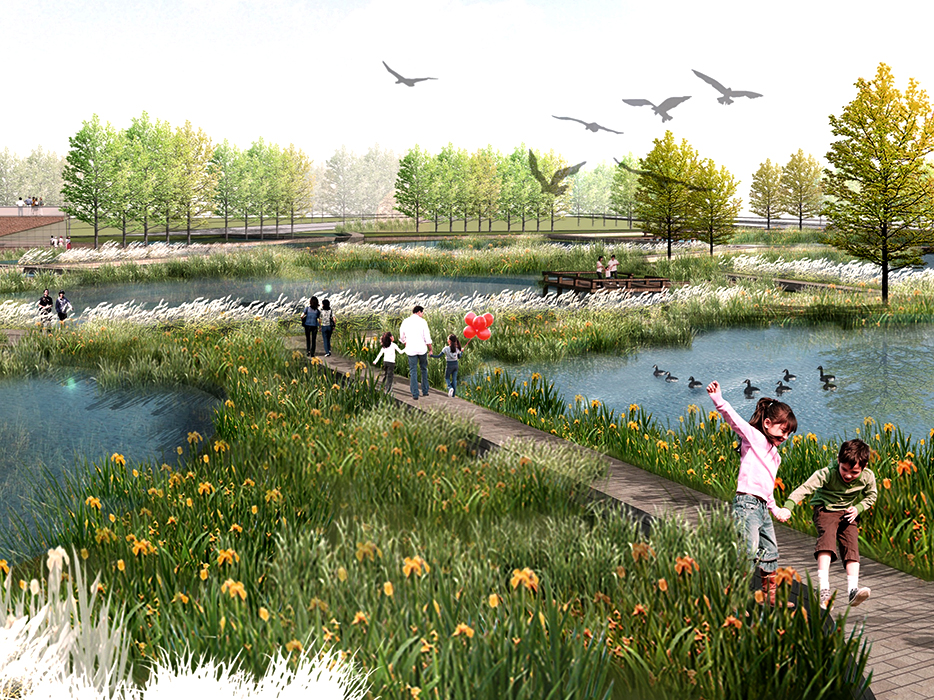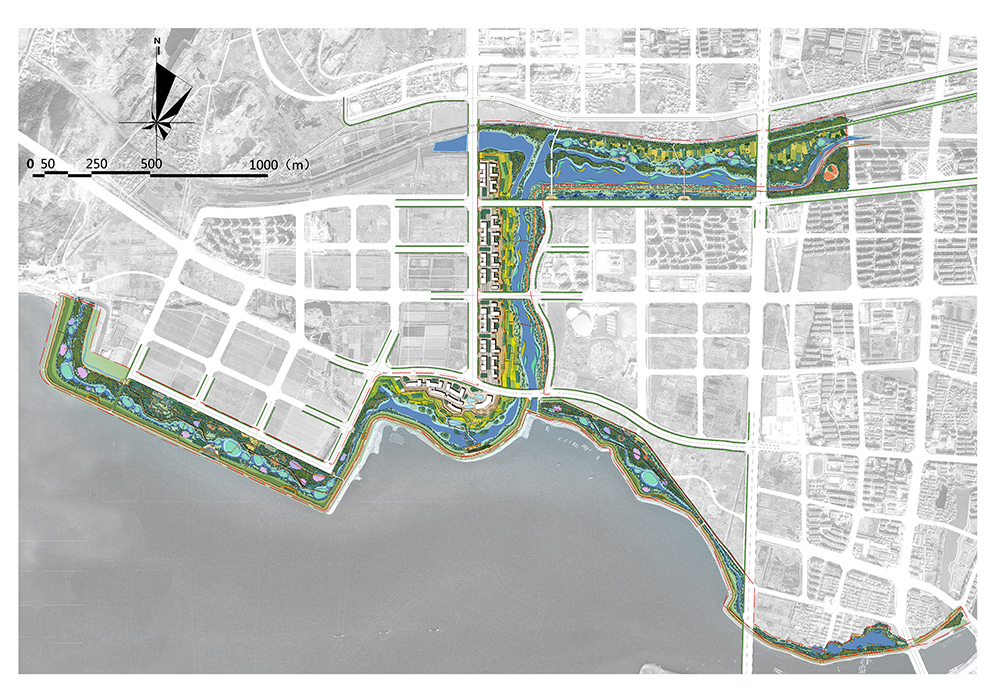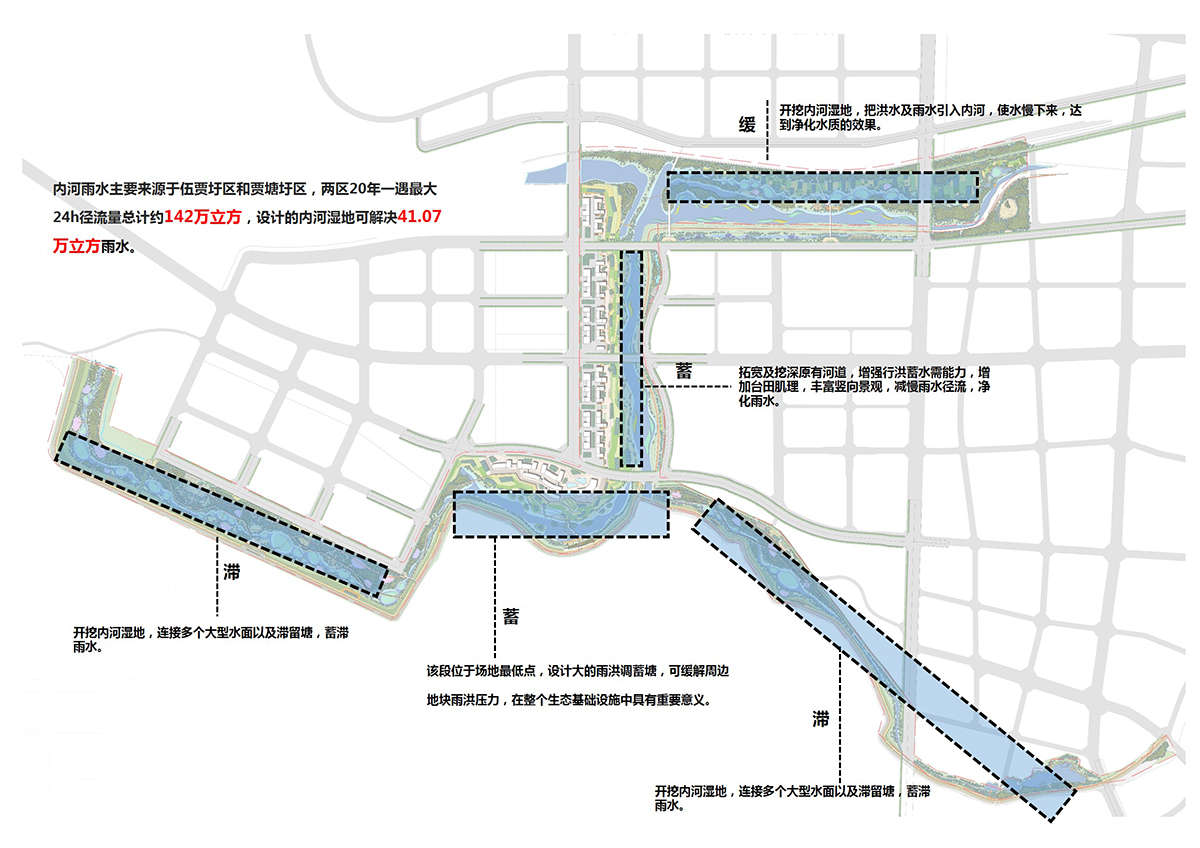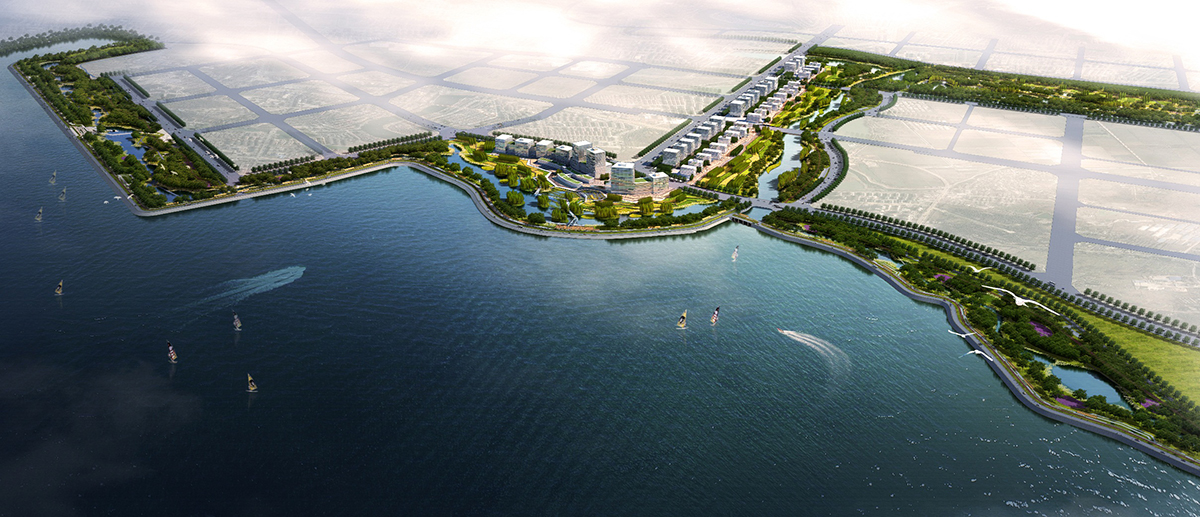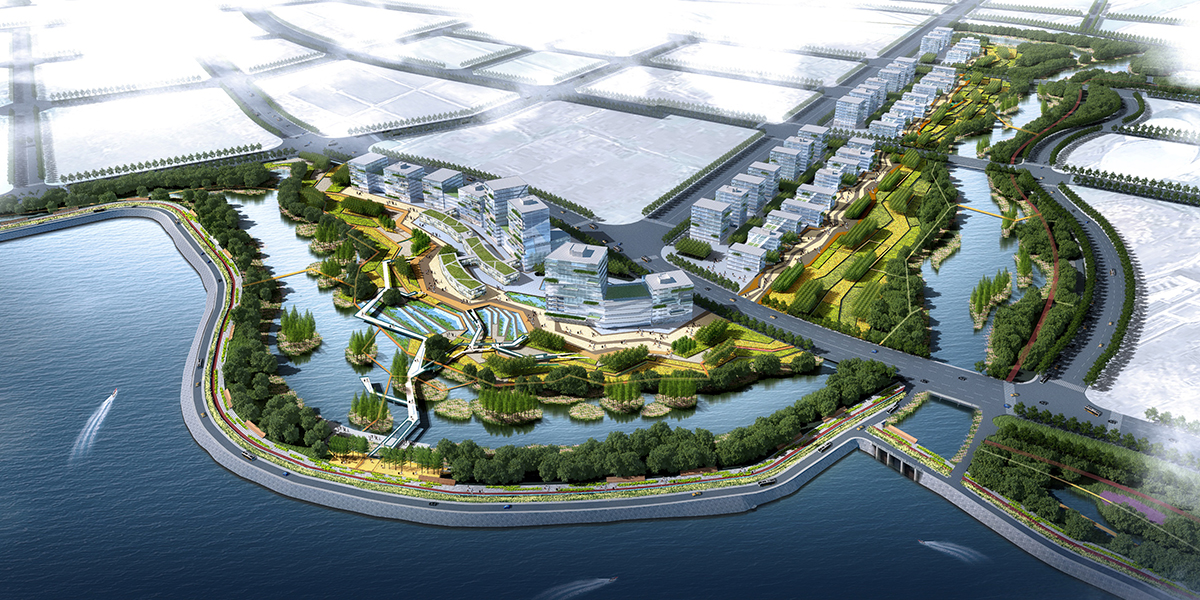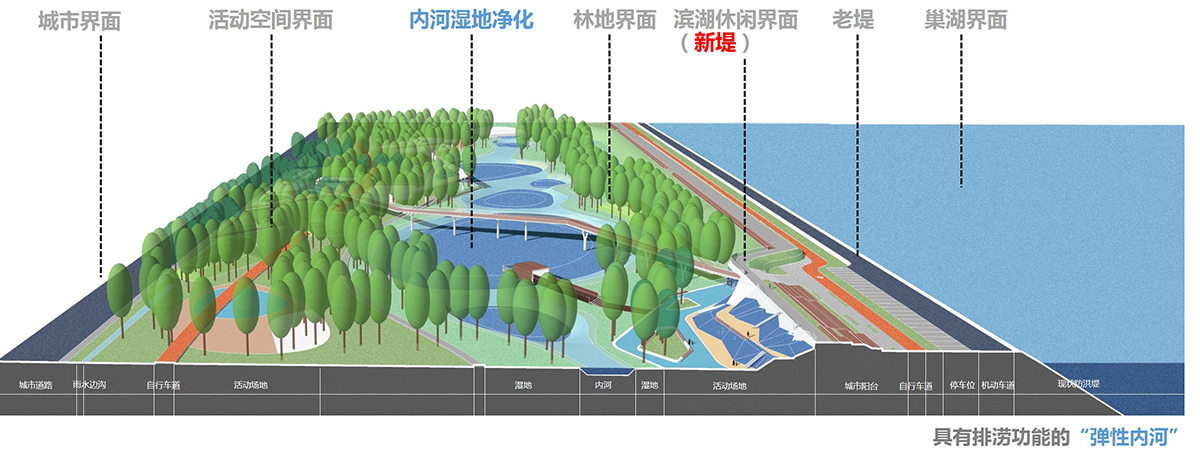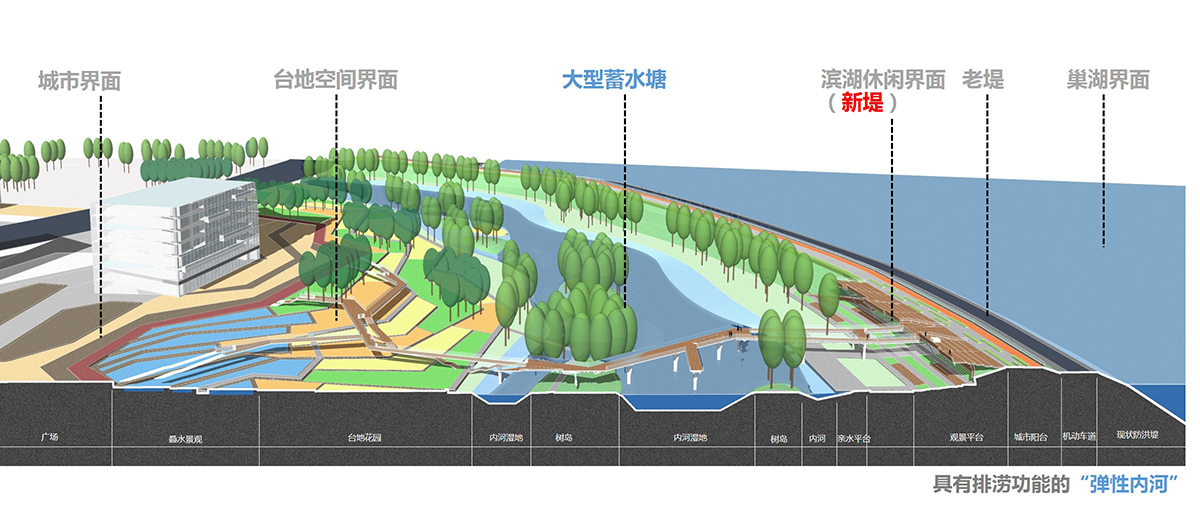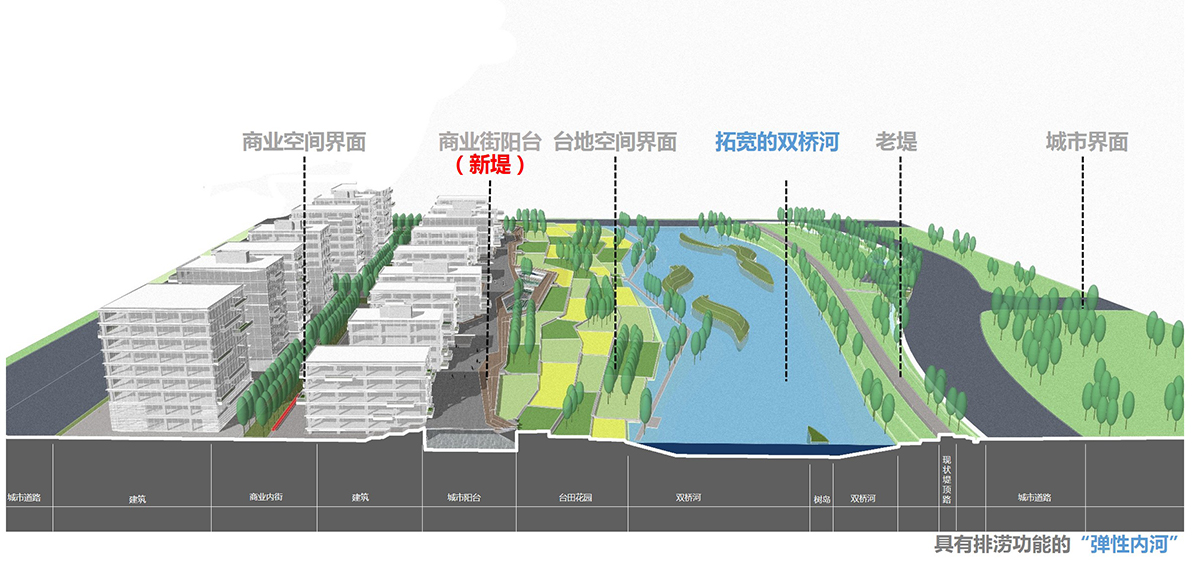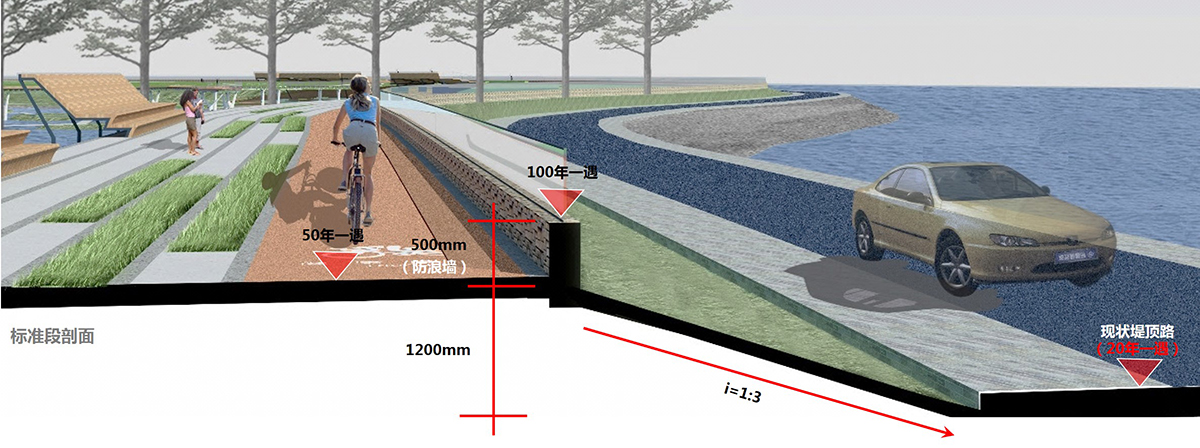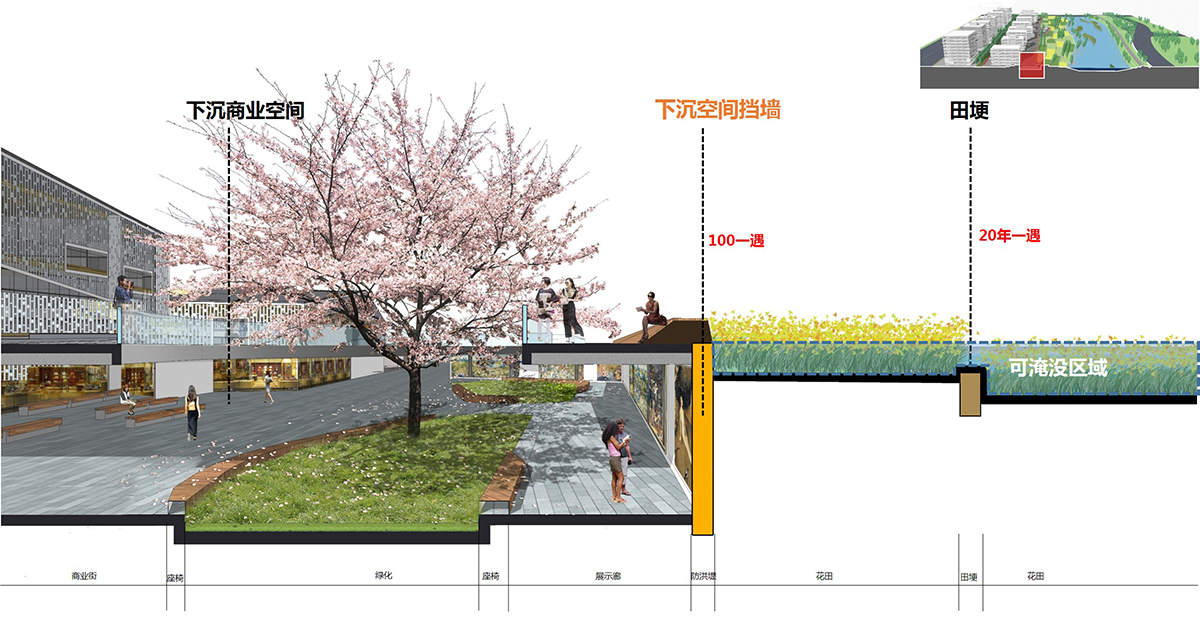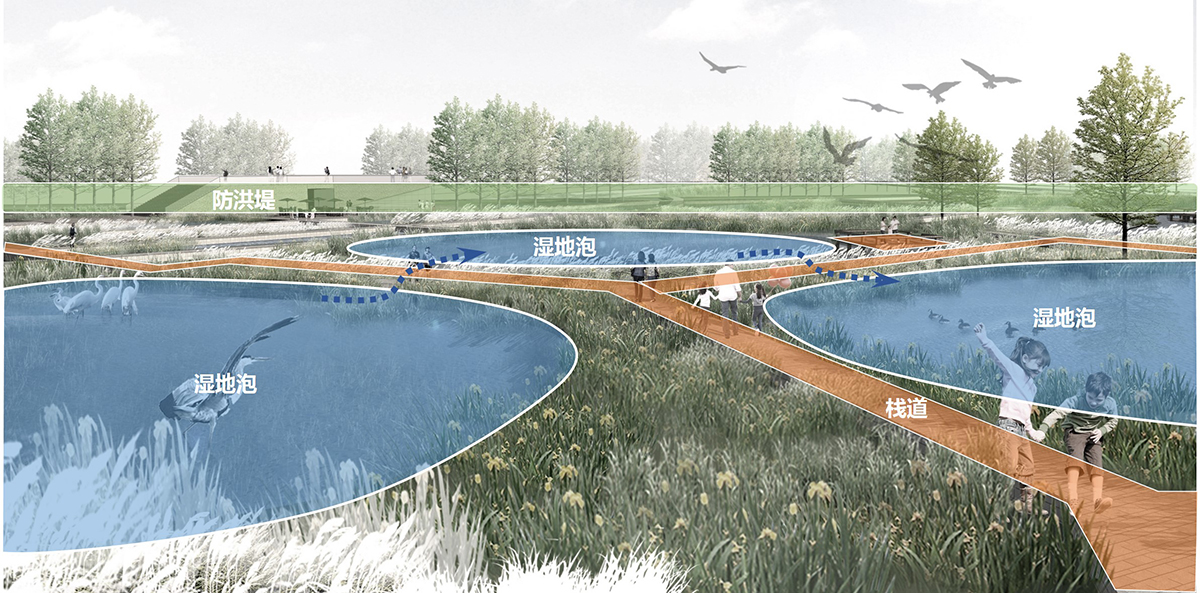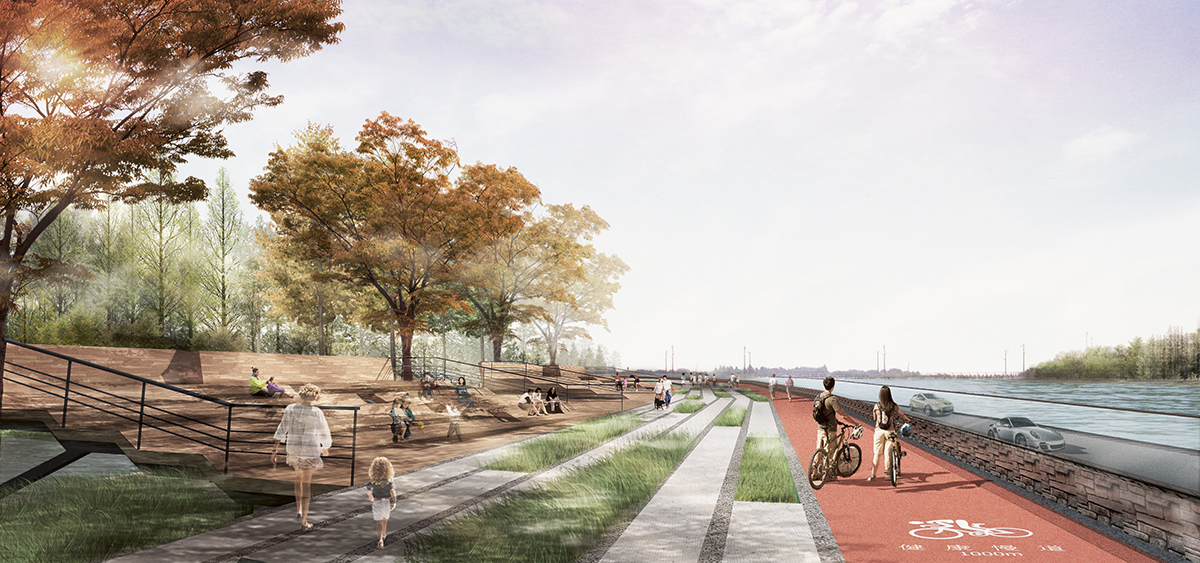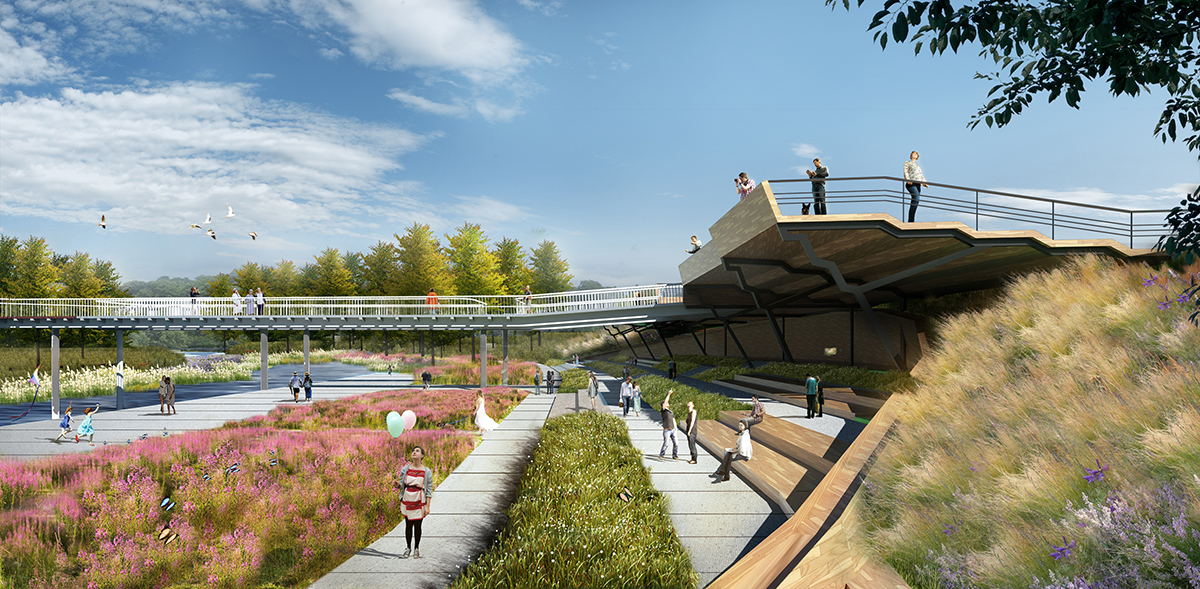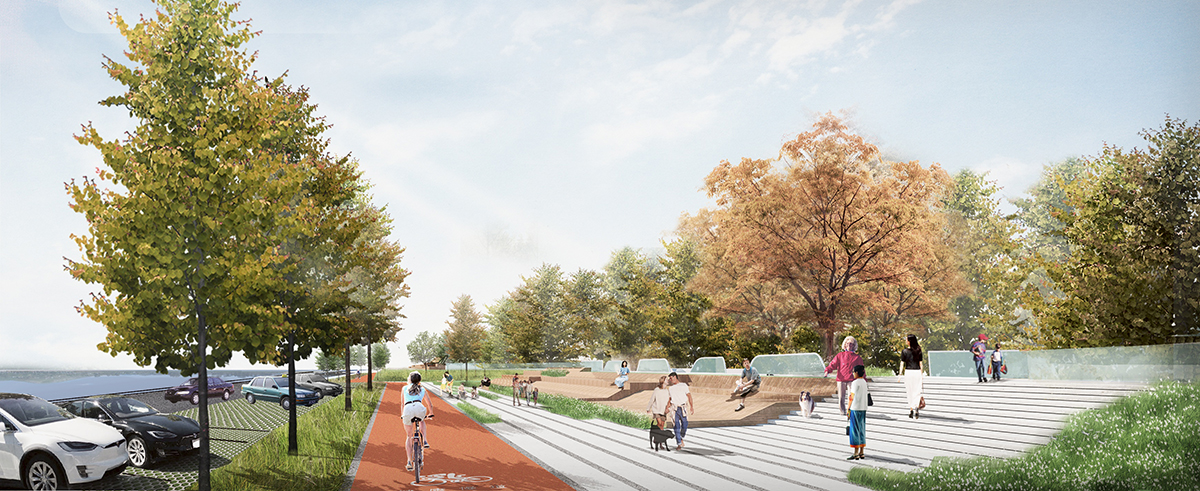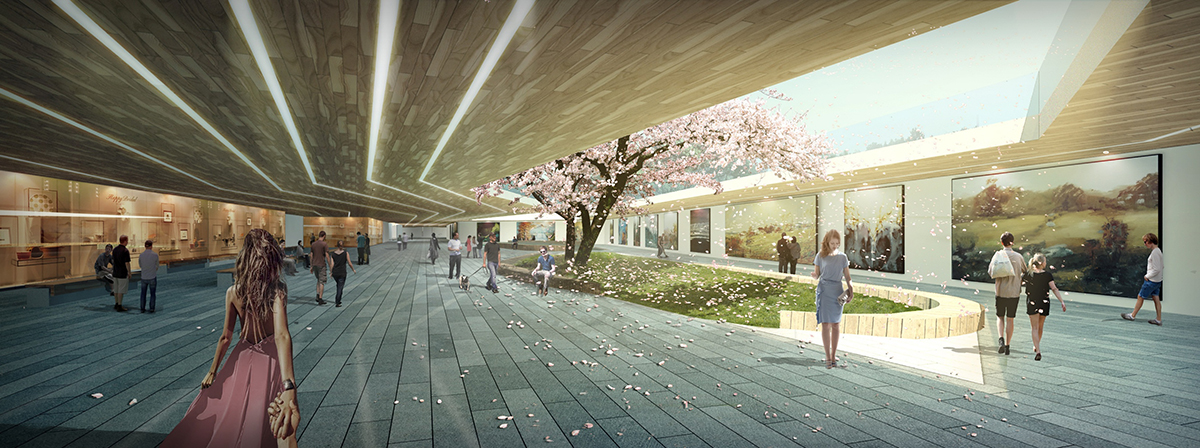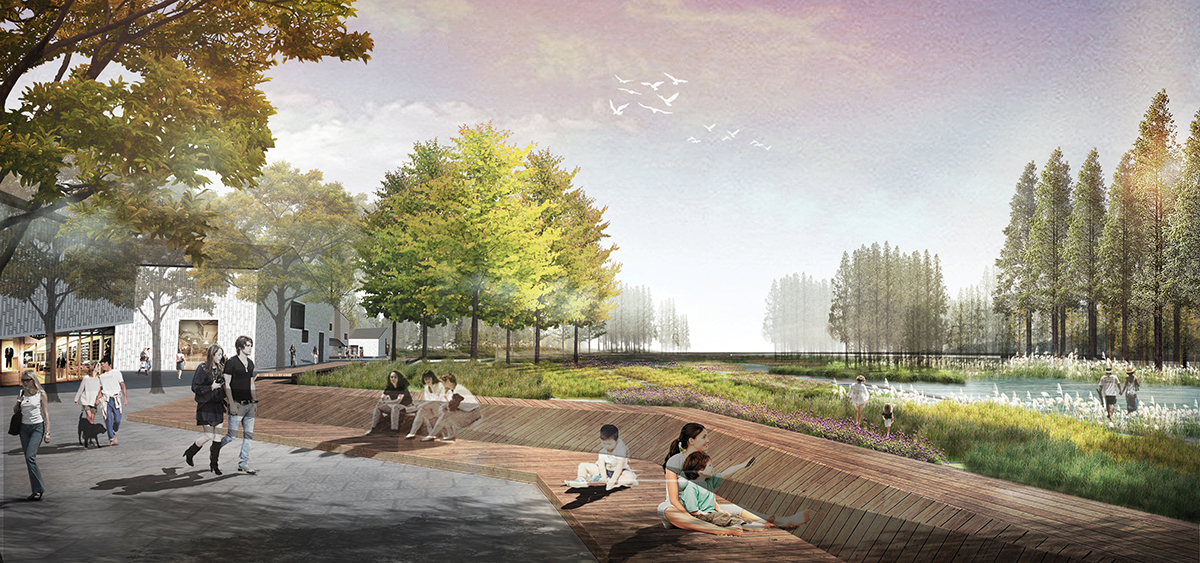Chaohu Shuangqiao River Basin Ecological Landscape
Project Information
- Project Location:
- China Chaohu, Hunan
- Project Scale:
- 173.90 Hectares
- Design Time:
- March 2017
- Client:
- Chaohu City Planning Bureau
Project Profile
1. Project Statement
The project is located on the southern side of the Binhu New District, serving as an important green landscape corridor and a key component in showcasing the image of Binhu New District. The location is advantageous, with convenient transportation, as the Huainan, Hejiu railways, and the Hening, Huping, and Hewu expressways pass through the area. The design aims to restore the ecological environment, create diverse habitats, enhance flood protection, alleviate waterlogging, and integrate leisure and lifestyle spaces to create a sustainable, safe, and healthy ring around Chaohu Lake Wetland Park, constructing a new image of "Beautiful Chaohu, Vibrant Green Corridor."
2. Challenge and Strategy
1) Issue 1: Severe Waterlogging
Due to concentrated urban rainfall and high groundwater levels, the Chaohu embankment's elevation is higher than the city level, and the capacity of the Shuangqiao River is limited and cannot discharge into Chaohu, leading to rainwater accumulation and frequent waterlogging.
Strategy: Develop a Resilient and Ecological Inner River Wetland System – Resilient Inner River
Establish a Rainwater Management System
Calculate the water collection capacity of the surrounding areas to design a continuous inner river outside the Chaohu embankment.
Expand the Shuangqiao River channel to meet the city’s flood discharge capacity needs and use techniques such as retention, storage, and slowing to reduce rainwater flow speed and alleviate flood pressure.
Create a Natural Wetland Purification System
Design a bead-like inner river wetland that uses vertical design and topographical differences, along with plantings, to filter rainwater.
Increase Water Storage Space in Low-Lying Areas
Design an open water surface at the lowest point of the site to expand water storage capacity and serve as the central landscape feature of the area.
Build a "Chain of Life" for Plant and Animal Habitats
Create diverse habitats to provide refuge for plants and animals, enhancing the ecological chain.
2) Issue 2: Low Urban Flood Protection Level
The current Chaohu embankment is designed for a 50-year flood event, and the Shuangqiao River’s capacity is less than a 5-year event, necessitating improvements.
Strategy: Widen Flood Channels, Raise Embankment Design Elevation, Create Invisible Embankments – Urban Terrace
Widen Existing Channels
Expand floodplains to meet flood discharge requirements, enhance terrace patterns, enrich vertical landscapes, slow rainwater runoff, purify rainwater, and improve the river's ecosystem.
Earthwork Excavation and Filling Measures
Design inner river wetlands using locally sourced earthwork to form new flood embankments, raising the Guishan to Chaohu Gate section of Chaohu City to a 100-year flood level, with Shuangqiao River embankments raised to a 20-year flood level.
Redesigned Invisible Embankments
Use landscape techniques to integrate embankments with cultural display walls, children's play areas, service buildings, and viewing platforms, creating an urban terrace that provides leisure space for citizens.
3) Issue 3: Disconnection Between City and Lakeside Greenway
The city is near the lake, but the view is blocked by hard embankments, preventing access to the scenic lake views. Strengthening the relationship between the city and lakeside greenway is necessary to increase waterfront leisure and activity spaces.
Strategy: Enhance the Slow-Movement System, Improve Greenway Quality – Slow-Movement Corridor
Build a Complete Slow-Movement Network
Construct a comprehensive greenway system with bike paths, waterfront walkways, and embankment trails to meet citizens’ needs for water access, lake views, and fitness.
Add Skywalk Bridges
Strengthen connections between the city and lakeside greenways, with skywalk designs traversing flower fields, tree islands, and water bodies, enriching visitors' spatial experiences.
4) Issue 4: Lack of Leisure and Exercise Spaces for Residents
The transitional area between the city and water bodies is an essential functional interface that needs to incorporate leisure, entertainment, and sports facilities.
Strategy: Create Multi-Level Outdoor Leisure Spaces for All – Lohas Park
Integrate Themed Activities
Incorporate activities focused on science education, leisure, sports, and culture to promote a leisurely lifestyle.
Design Multi-Level Activity Areas
Establish three types of activity spaces based on topographical and flood protection differences:
Non-flooded zones above flood levels for permanent structures like commercial shopping streets.
Floodable zones above normal water levels but below flood levels for outdoor facilities that allow inundation, such as waterfront promenades, viewing platforms, science education gardens, and fitness areas.
3. Conclusion
By addressing the four key issues of resilient inner rivers, urban terraces, slow-movement corridors, and Lohas parks, the project aims to create different waterfront urban landscapes under the premise of flood control and water management. It fosters a connection with nature, lightly touching the earth, and allowing for natural harmony without disruption. The plan outlines a future development blueprint for the Chaohu Ring Ecological City, transforming it into a wetland park that integrates ecology, safety, and health, serving as a model for ecological restoration and embankment enhancement around Chaohu Lake, and forming a beautiful landscape along its shores.
